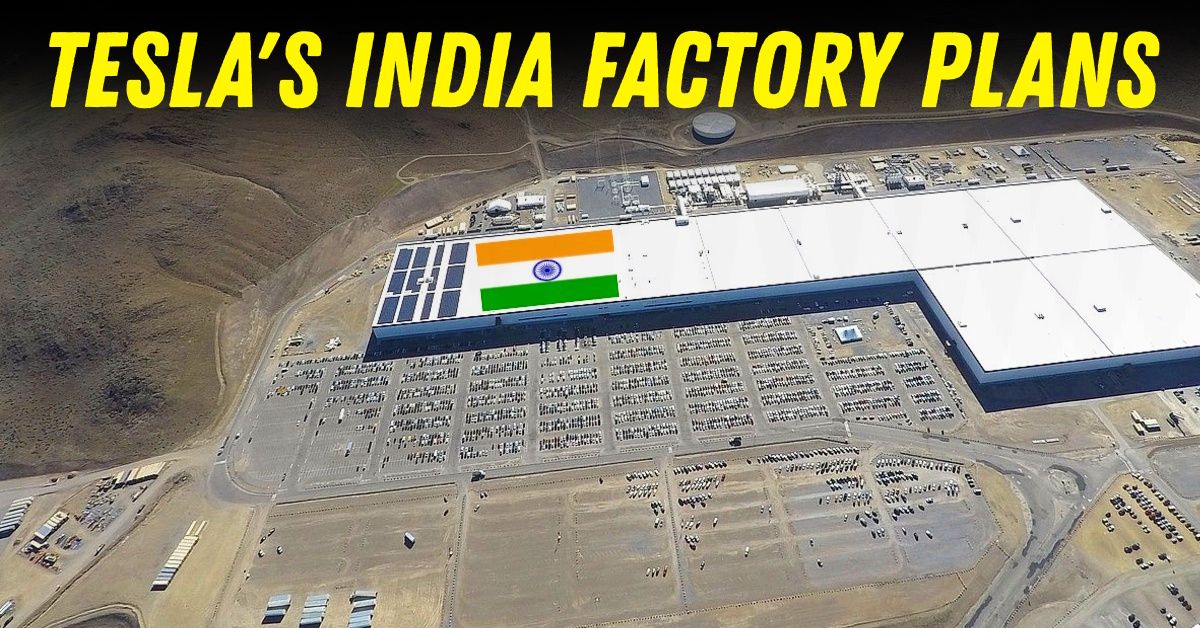Tesla's First India Factory To Come Up At Satara, Maharashtra


Tesla’s long-anticipated entry into the Indian market appears to be taking concrete shape, quite literally, with the company actively pursuing land acquisition in Satara, Maharashtra. Sources suggest that the EV maker is eyeing a 100-acre plot along the Pune-Bengaluru highway to establish a completely knocked down (CKD) assembly unit. This move, if it goes through, could mark a turning point not only for Tesla’s strategy in the region but also for how premium electric vehicles are accessed, priced, and perceived.
For years, Tesla’s relationship with the Indian market has been stuck in a loop of speculation and stalled negotiations. Issues around import duties and lack of policy clarity kept the EV maker on the sidelines.
But recent developments indicate a more serious intent, particularly after the Indian government rolled out a new EV policy in March 2024. The policy offers duty concessions to manufacturers who invest in local assembly infrastructure and commit to eventual localisation.
Against this backdrop, Tesla’s interest in Satara is significant. The location provides logistical ease due to its proximity to Pune’s industrial ecosystem, access to the Mumbai and Goa ports, and strong road and rail networks. But beyond operational logic, the choice signals a change in how Tesla views the opportunity here - not just as an import market but as one where it wants to build something from the ground up.
A CKD unit allows Tesla to import vehicle kits and assemble them locally. This avoids the steep 100 percent import duty that currently applies to fully built cars brought into the country. Instead, Tesla could benefit from a far more reasonable duty structure, making its models significantly more affordable.
For buyers, this could be a game changer. At present, Tesla’s global offerings are priced out of reach for most due to the duty markup. A locally assembled Model 3 or Model Y, for instance, could cost 20 to 25 percent less than a completely built unit, depending on the final tax structure and localisation level.
Beyond pricing, local assembly also signals serviceability and reliability. One of the major concerns for prospective buyers has been Tesla’s absence on the ground - no showrooms, no service centres, and no charging infrastructure tailored to their vehicles. A CKD unit won’t solve all of that immediately, but it sets the stage for a wider ecosystem to take shape, including authorised service outlets, spare part availability, and charging support.
Establishing a presence in Maharashtra, especially near Pune, also places Tesla amid some of the country's most prominent automotive and tech talent pools. This could be a prelude to a two-phase strategy - start with CKD assembly, then slowly increase localisation over time. That’s how several global automakers have played their entry in the region, including BMW, Mercedes-Benz, and Hyundai. It offers the company flexibility, keeps upfront costs lower, and allows it to study demand patterns more closely.
The new site also allows Tesla to stay competitive. The EV market is heating up, with local players like Tata Motors and Mahindra expanding aggressively, while global brands like BYD and MG Motor have already taken meaningful steps in pricing and production. If Tesla wants to capture a piece of this emerging middle ground, buyers who want a premium product but not at an absurd premium, it needs local operations to support it.
The purchase process for the Satara land is reportedly still at a preliminary stage, with state authorities expected to review Tesla’s investment proposal soon. Maharashtra Industrial Development Corporation (MIDC) officials have visited the proposed site and initiated a review. But land allotment and formal clearances are just the beginning. Approvals, construction, equipment setup, and staff hiring could take well over a year.
That means actual vehicles rolling out of Satara might be a 2026 story. However, even the announcement of land acquisition could be enough to signal intent to suppliers, partners, and buyers. For enthusiasts who’ve been waiting years for Tesla to make a meaningful move, this is perhaps the strongest signal yet that the wait is finally ending.
The most tangible benefit for future buyers is pricing. If Tesla manages to bring its models within the ₹40-₹50 lakh band through local assembly, it could rival offerings from Volvo, BMW, and Hyundai. Moreover, the brand carries strong aspirational value, especially among younger urban drivers.
What also stands out is the likely impact on charging infrastructure. Once Tesla sets up an assembly base, it’s reasonable to expect the rollout of Supercharger stations in key urban corridors. This could lift the entire EV ownership experience by improving confidence in long-distance travel and urban reliability.
In the end, Tesla’s Satara move is not just about factory land. It’s about planting a long-overdue flag in one of the world’s fastest-growing auto markets. The first 100 acres could very well be the foundation on which Tesla builds its future across the region.